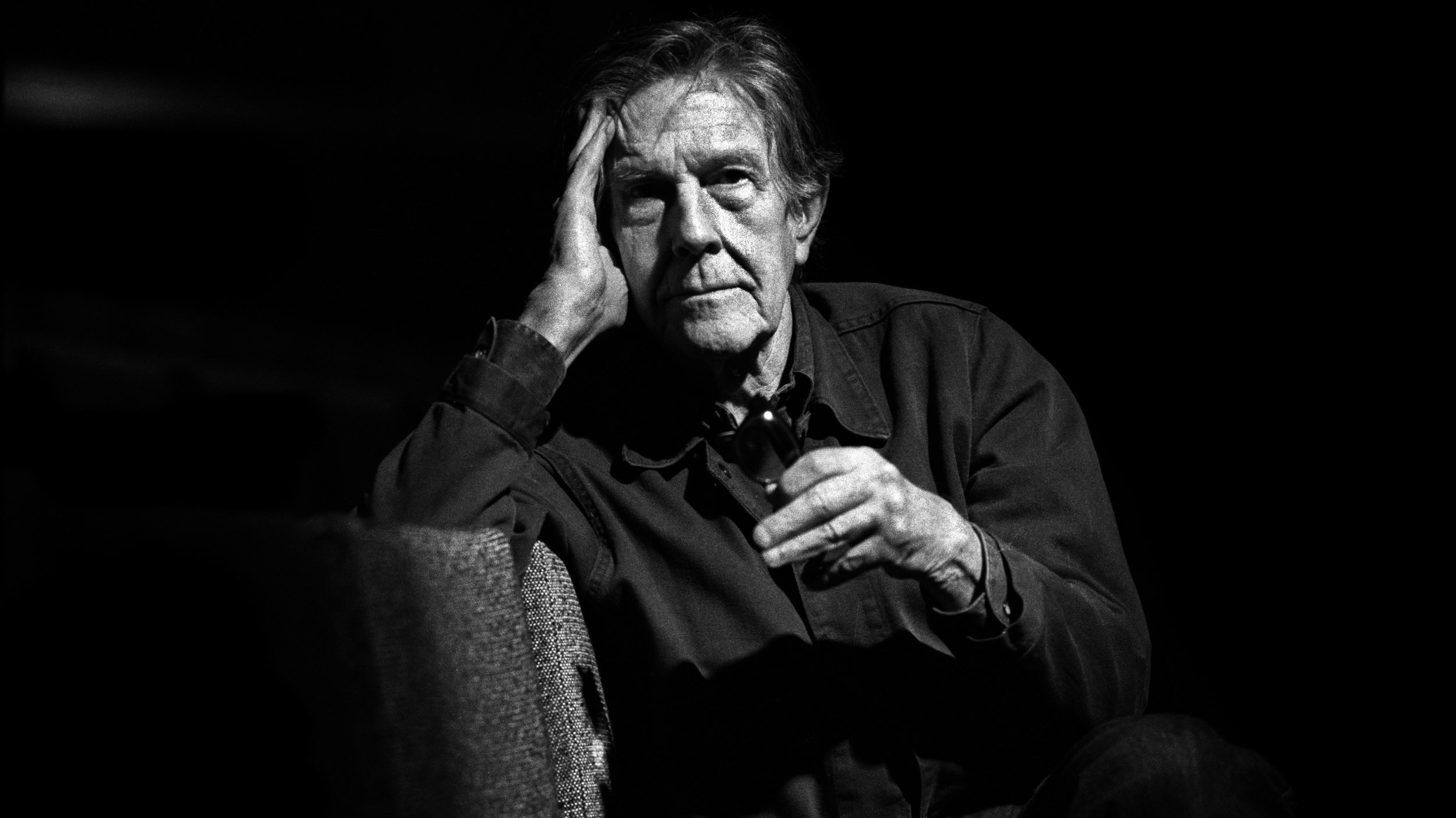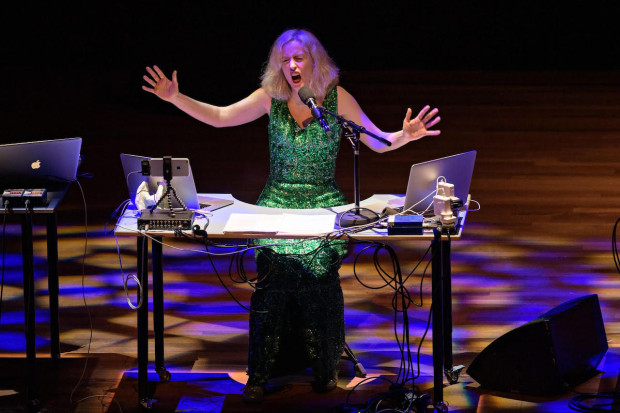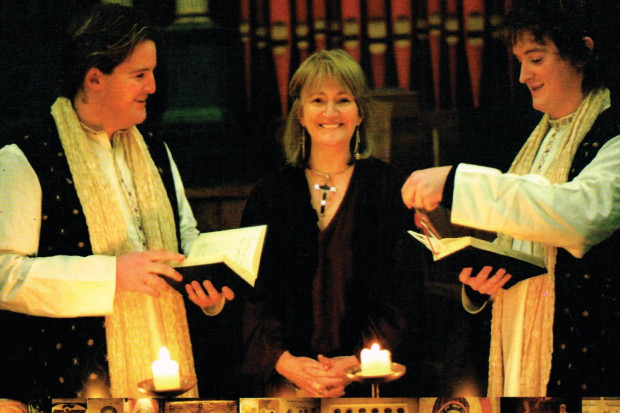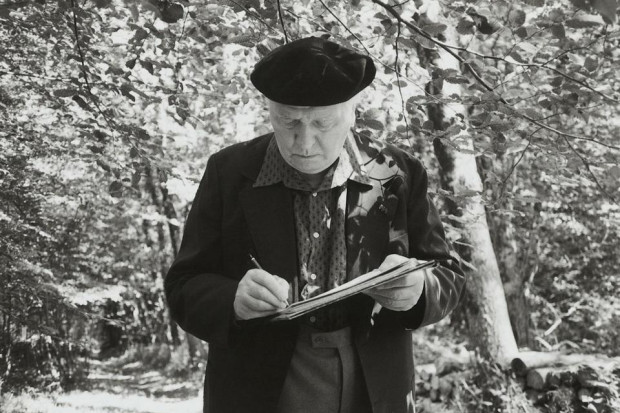
John Cage
Editorial: Noisy Little Country
This year, two young Irish composers, Jennifer Walshe and Donnacha Dennehy, both selected John Cage’s 4’ 33” (1952) to be performed as part of their ‘Composer’s Choice’ concerts at the National Concert Hall. To have Cage’s audacious four minutes and thirty-three seconds of ‘silence’ performed in an archetypal respectable venue such as the NCH is tempting enough should you get the opportunity, but considering Michael Cronin’s arguments in our lead article this issue, ‘Silenced by Sound’, perhaps there is more to the composers’ choice than meets the eye.
The philosophy behind Cage’s piece is well known, i.e. the sounds that you hear during the few minutes of ‘silence’, whatever they may be, constitute the music. The piece was a natural progression for Cage from incorporating everyday sounds into his music. Eventually, silence itself, in the form of 4’ 33”, was sufficient.
One interpretation of this concept is that it is a form of empowerment for the listener. Forced to rethink the normally obtrusive sounds of our society as ’music’, one can then reclaim more control over their modern, habitually alienating, living environment.
4’ 33” was composed in 1952. Fifty years on, one wonders how powerful this idea still is, or more importantly, how relevant is it to our noise and volume problem as outlined by Michael Cronin? Evidently it is interesting enough as a piece for two young composers to choose it for performance, so does this imply that there is a new edge to it in 2002, a renewed relevance which caused this double programming? Perhaps it is there more out of its perceived relevance: after all, if noise and volume are important issues in 2002, however different the circumstances may be, we may still feel we have to touch base with John Cage, even though this may be giving the work more importance than it deserves in 2002. In reality, we probably comfort ourselves by pondering fifty-year old 4’ 33”, considering the noise and volume situation we now face, something far more perilous and sinister than the mere sound of industrialisation/technologisation that Cage and his contemporaries experienced. It could be suggested that the significance of 4’ 33” in the NCH concerts was little more than a token touchstone, a polite nod that the composers felt compelled to make to a piece that was of its time. A piece that deals with the issue of ‘sound’, ‘noise’ and so on today has much more of a dogfight on its hands, and on the basis of those two concerts it could be suggested that a far more intense reaction to the din of modern living is occupying some composers. As in our daily lives, the issue of noise is inescapable in composition too.
In Jennifer Walshe’s NCH concert, she programmed her own piece they could laugh smile (1999) for trombone and tape. After a neurotic, stop-and-start build up, the climax of the piece has the performer swearing violently at the top of his voice, screaming ‘shut up, shut the fuck up’ at the electronics which are completely drowning him out. The resonances for society immediately come to mind.
Dennehy selected 4’ 33”, according to his explanation in a pre-concert talk, because he is interested in the sounds/silences between the notes. This ‘search for silence’ strikes one as a possible instinctive reaction to our present situation with noise and volume. Interestingly, another young Irish composer, Conor Curran, explained his piece In Between (from the CD By the New Time, Silverdoor, 2001) in similar terms: ‘The name In Between came from the idea of the space in between the sounds. I often find that the space between the sounds is far more important than the actual sound themselves.’
Similarly, at the RTÉ Living Music Festival, Deirdre McKay’s Ice Etchings, in its apprehensiveness, seemed too to be ‘looking for the silence’.
In Dennehy’s NCH concert, he programmed a new work of his own entitled Blips and Static. There was a repeat performance of this piece in the IMMA in October of this year, about which Douglas Sealy in the Irish Times wrote: ‘Dennehy’s Blips and Static is made of those irritating background noises, mostly electrical, which are the bane of today’s technological society, and he recombines these sounds with obvious pleasure, although he doesn’t make them any more tolerable.’ (28 October 2002)
An exercise in empowerment perhaps, taking on the vile mobile phone and chopping it up musically as a service to us all? Dennehy’s choice of 4’ 33” and Blips and Static typifies the dual approach that we normally associate with a musical response to the noise of our society – one to turn obtrusive sound on its head and make music out of it, the other to provoke us, through silence, to take that step for ourselves. Jennifer Walshe’s approach, however, appears to be akin to declaring war on the volume of noise and simply, but powerfully, articulating the frustration and disturbance that it causes us.
These compositional approaches that lend themselves to thinking about the din of modern society seem to articulate aspects of what Michael Cronin describes in ‘Silenced by Sound’, though his article goes beyond the matter of aesthetics and calls our attention to what is essentially a political issue, that is, the commoditisation of our aural space by the free market, and its zest for turning us, through overwhelming volume, into brainless, unreflecting consumers. The angrier, the more passionate and more ubiquitous contemporary music gets in its articulation of these affairs, the harder it is going to be for society to ignore.
Published on 1 November 2002
Toner Quinn is Editor of the Journal of Music. His new book, What Ireland Can Teach the World About Music, is available here. Toner will be giving a lecture exploring some of the ideas in the book on Saturday 11 May 2024 at 3pm at Farmleigh House in Dublin. For booking, visit https://bit.ly/3x2yCL8.

















